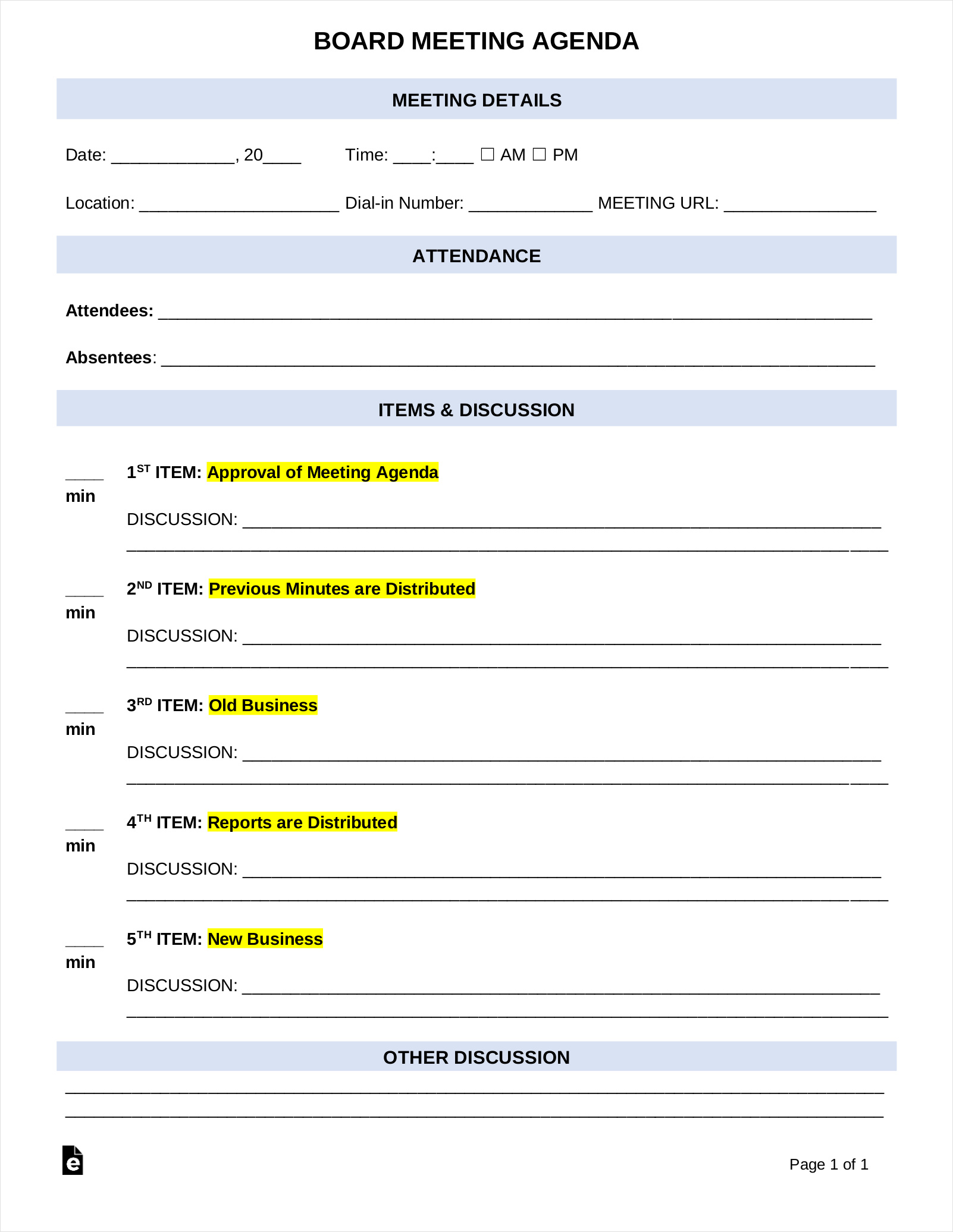What is a Department Meeting Agenda?
A department meeting agenda is a document that outlines the topics and activities to be discussed during a scheduled meeting within a specific department of an organization. It serves as a roadmap for the meeting, ensuring that all necessary items are addressed and allowing participants to prepare in advance.
The purpose of a department meeting agenda is to provide structure, facilitate communication, and maximize productivity during the meeting. By setting clear objectives and allocating time for each item, the agenda helps keep the discussion focused and ensures that all relevant points are covered.
Why Having a Department Meeting Agenda is Important
Having a well-planned department meeting agenda brings several benefits to both the organizers and participants:
- Efficient use of time: With a clear agenda, everyone knows what to expect and can come prepared. This reduces the need for lengthy explanations or off-topic discussions, making the meeting more time-efficient.
- Improved communication: By setting specific topics and objectives, the agenda helps guide the discussion and ensures that all important information is shared. This promotes effective communication within the department.
- Increased productivity: A well-structured agenda allows participants to stay focused and actively contribute to the meeting. This leads to better decision-making and increased productivity.
- Accountability: The agenda serves as a reference point for follow-up actions and responsibilities. It helps hold participants accountable for their commitments and ensures that tasks are completed promptly.
How to Create an Effective Department Meeting Agenda
Creating an effective department meeting agenda involves several key steps:
Step 1: Determine the Objective of the Meeting
Before creating the agenda, it is important to clarify the purpose of the meeting. Ask yourself: What do you hope to achieve by the end of the meeting? Are you looking to make decisions, brainstorm ideas, or provide updates? Having a clear objective will help you structure the agenda accordingly.
Step 2: Identify the Topics to be Discussed
Once you have determined the objective, make a list of the specific topics that need to be discussed during the meeting. Consider the priorities of the department and any pressing issues that require attention. Be sure to include time for open discussion and questions.
Step 3: Allocate Time for Each Topic
Estimate how much time should be allocated for each topic on the agenda. This will help you stay on track during the meeting and ensure that all items are covered within the allotted time. Be realistic in your time estimates and allow for flexibility, as some topics may require more discussion than others.
Step 4: Organize the Agenda in a Logical Order
Arrange the topics in a logical order that flows smoothly from one item to the next. Start with any necessary administrative items or updates, then move on to more substantive discussions. This will help maintain the participants’ interest and engagement throughout the meeting.
Step 5: Share the Agenda in Advance
Distribute the agenda to all participants well in advance of the meeting. This gives them time to review the topics, gather any necessary information, and come prepared with their input or questions. Sharing the agenda also helps set expectations and allows participants to plan their schedules accordingly.
Step 6: Follow the Agenda During the Meeting
During the meeting, stick to the agenda as closely as possible. Assign a timekeeper to ensure that discussions do not exceed the allocated time for each item. If a topic requires more time than anticipated, consider scheduling a separate meeting to address it in more detail, or table it for the next meeting.
Step 7: Summarize and Assign Action Items
At the end of the meeting, summarize the key points discussed and assign action items to the relevant participants. Communicate who is responsible for what and set deadlines for completion. This ensures that the outcomes of the meeting are documented and that progress can be tracked.
Tips for Running Effective Department Meetings
In addition to creating an effective department meeting agenda, there are several strategies you can employ to ensure that your meetings are productive and engaging:
- Start and end on time: Respect everyone’s time by starting and ending the meeting as scheduled. This sets the tone for professionalism and encourages punctuality.
- Limit the number of attendees: Keep the meeting focused by inviting only those who are directly involved or have a stake in the topics being discussed. Avoid unnecessary attendees who may derail the discussion.
- Encourage active participation: Create an environment that encourages participants to share their ideas and opinions. Ask open-ended questions, actively listen, and ensure that all voices are heard.
- Use visual aids: Incorporate visual aids such as slides or charts to support your presentation or discussion. Visuals can help convey information more effectively and keep participants engaged.
- Take meeting minutes: Assign someone to take minutes during the meeting. These minutes should capture the key points discussed, decisions made, and action items assigned. Distribute the minutes to all participants after the meeting.
- Evaluate and adjust: Regularly evaluate the effectiveness of your department meetings and make adjustments as needed. Solicit feedback from participants and seek ways to continuously improve the meeting process.
Sample Department Meeting Agenda
Here is an example of a department meeting agenda that incorporates the steps and tips outlined above:
1. Administrative Updates (10 minutes)
Discuss any administrative matters, such as announcements, upcoming events, or changes in policies or procedures.
2. Project Updates (30 minutes)
Review the progress of ongoing projects, highlighting any milestones, challenges, or successes. Allow time for questions or concerns from participants.
3. Team Discussion: Improving Communication within the Department (45 minutes)
Engage the team in a discussion about communication practices within the department. Encourage participants to share their ideas and suggestions for improving communication channels and processes.
4. Brainstorming Session: Identifying New Opportunities (30 minutes)
Facilitate a brainstorming session to generate ideas for new projects, initiatives, or improvements within the department. Encourage participants to think outside the box and share their creative ideas.
5. Training Session: Introduction to New Software (45 minutes)
Provide a training session on a new software or tool that will be implemented within the department. Walk participants through its features and functionalities, and allow time for hands-on practice.
6. Open Forum: Questions and Concerns (15 minutes)
Open the floor for any additional questions, concerns, or feedback from participants. Address any outstanding issues and clarify any points of confusion.
7. Wrap-up and Action Items (10 minutes)
Summarize the key points discussed during the meeting and assign action items to the relevant participants. Set deadlines and ensure that everyone understands their responsibilities.
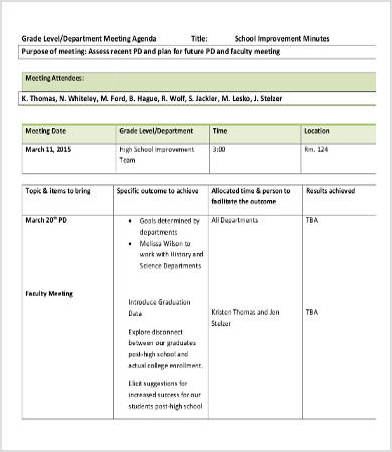
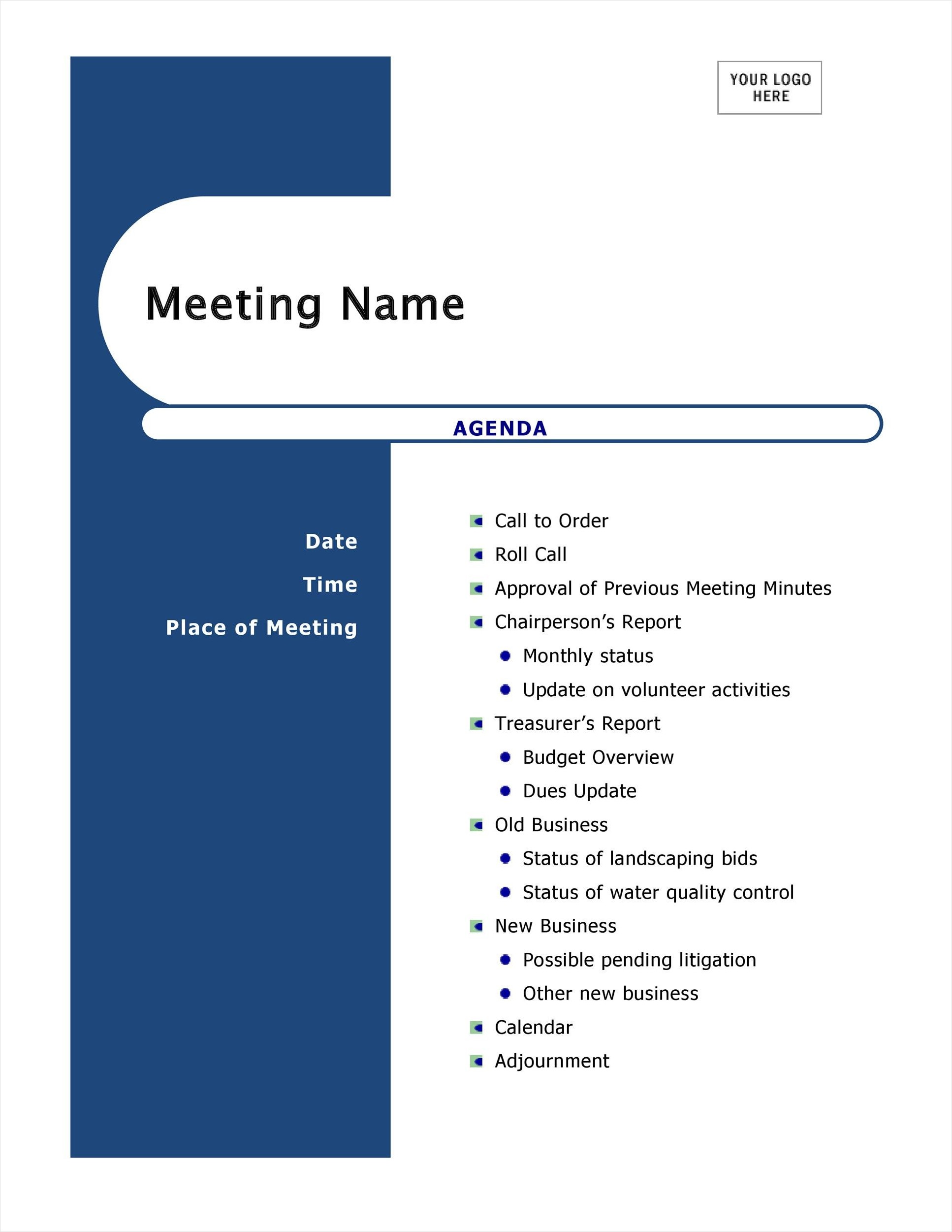
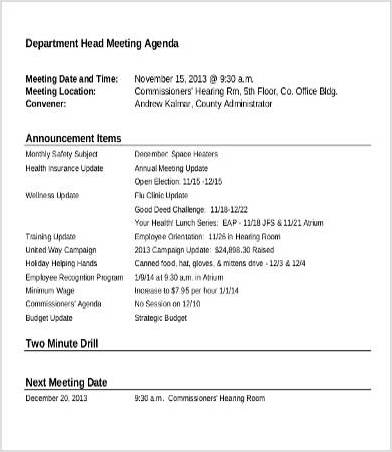
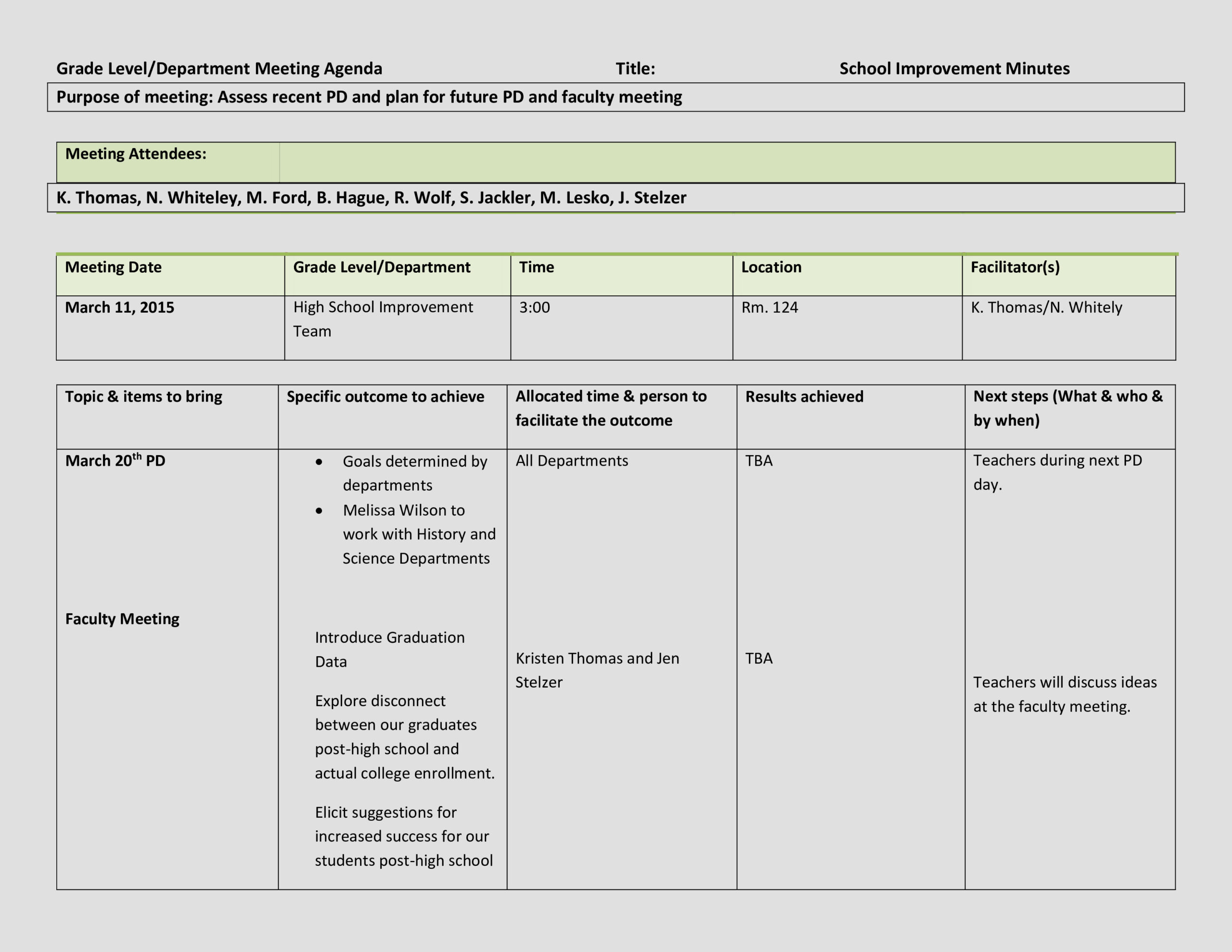
Conclusion
A well-planned department meeting agenda is essential for running effective and productive meetings. By following the steps outlined in this guide and incorporating the tips provided, you can ensure that your department meetings are focused, engaging, and yield meaningful outcomes. Remember to regularly evaluate and adjust your meeting process to continuously improve and meet the evolving needs of your department.
Department Meeting Agenda Template Excel – Download
